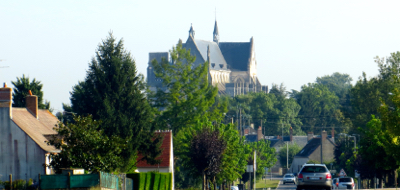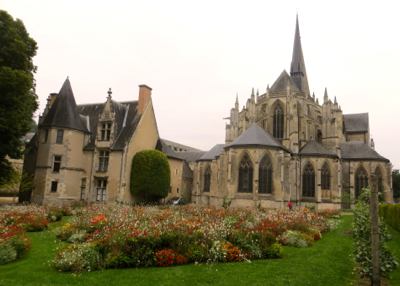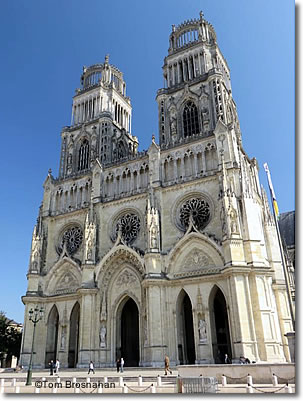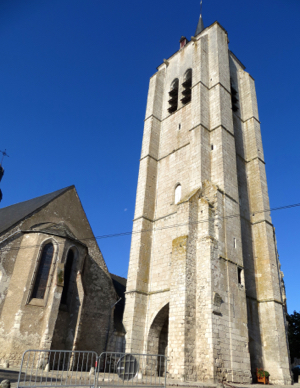Some years ago we learned a short French children's song at a Christmas Revels performance in Cambridge, Massachusetts. We liked the tune, and we would sing it from time to time, assuming it was referring to four large churches, or some other religious symbolism.
Orléans, Beaugency,
Notre-Dame de Cléry,
Vendôme, Vendôme.
When we returned to the Loire area recently, we realized that all of these towns were close together and we looked a little more into the history. It turns out that the song, called Le Carillon de Vendôme or Les Cloches de Vendôme, dates from the 15th century, and is one of the oldest known French songs.
Written in 1420 during the Hundred Years' War, it describes the small area that was left to the Dauphin Charles, the future King Charles VII, after the Treaty of Troyes, which turned over most of France to the English King Henry V.
The first verse asks, "My friends, what is left to the Dauphin so kind?" (The answer? "Orléans, Beaugency, Notre-Dame de Cléry, Vendôme, Vendôme.") The second verse laments, "The enemies have taken everything, leaving him nothing by contempt but "Orléans, Beaugency, Notre-Dame de Cléry, Vendôme, Vendôme."
This was a pretty small kingdom (map), but the four towns (plus Bourges, to the south) remained loyal to the Dauphin. Orléans, the most important city of the four, was long under siege because of its strategic importance. In 1429 Joan of Arc (1412 - 1431) came to the support of Charles VII, and France reclaimed Orléans and emerged victorious.
Church towers in each of these four towns would play the Carillon several times a day, in memory of their faithfulness to the king. Today, you can hear it at the Tour de St-Martin in Vendôme, where it chimes each hour. In Beaugency it is played 3 times a day.
We set out to visit all four of the towns, singing as we went.
Orléans is still a major tourist center in the region, easily accessible from Paris. Famous for Joan of Arc, it also has a majestic cathedral, art museums, lovely gardens, and some interesting art nouveau. Orleans is a busy transportation hub. More...
Beaugency is a charming small town on the right bank of the Loire, with churches, a château, narrow winding streets, and a lively market. More...
The tiny town of Cléry-Saint-André (population about 3,300), across the Loire from Beaugency, is best known for its flamboyant Gothic basilica, Notre-Dame de Cléry. These first three towns are clustered quite close together (map), with Cléry about 17 kilometers from Orléans, and Beaugency another 12 kilometers from Cléry. More...

Notre-Dame de Cléry towers over the small town and is visible from a distance.
Vendôme is the farthest away, about 50 kilometers northwest of Beaugency (map), and away from the Loire River, but on the Loir River (how's that for confusing?). It's also the next largest town after Orléans, with about 17,000 inhabitants. It boasts several lovely churches, gardens, interesting public buildings, and the ruins of a 17th century fortress. We enjoyed sitting in a café in the main square, waiting for the Carillon to play on the hour. More...

Holy Trinity Church and gardens, Vendôme, just a block or so away from the St. Martin's tower.
For us, visiting these four places was a bit of a nostalgic adventure. Other than possibly Orléans, they wouldn't appear on any typical tourist itinerary. But for history and a view of French village life, these are interesting places to visit if you're in the Loire region, and a nice break from the crowds visiting the wonderful châteaux of the Loire. And you can always sing as you go, "Orléans,Beaugency, Notre-Dame de Cléry, Vendôme, Vendôme."




